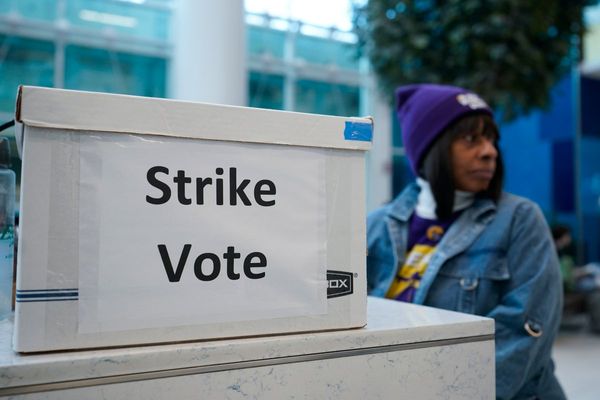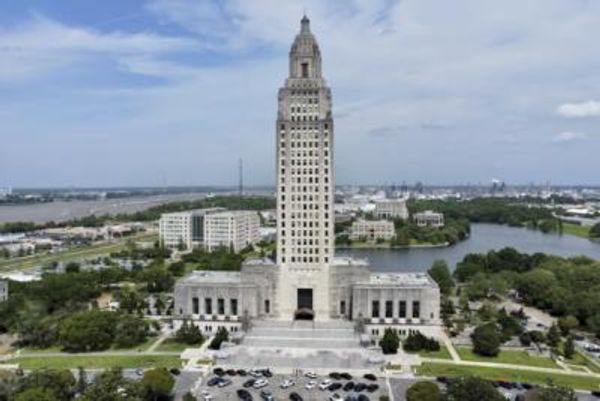
tinabelle from GettyImages for iStockphoto; Canva
What Was the Savings & Loan Crisis?
In the 1980s, there was a financial crisis in the United States that stemmed from skyrocketing inflation as well as the rise of high-yield debt instruments, called junk bonds, which resulted in the failure of more than half of the nation’s Savings & Loans institutions (S&Ls).
A savings & loan institution, also called a thrift, is a community-based bank. It provides checking and savings accounts as well as loans and mortgages to consumers.
The concept of the S&L began in the 1800s. They were formed with the mission to assist the working class with low-cost mortgages so they could afford homes. The most famous example of a thrift appeared in the film It’s a Wonderful Life. There were more than 3,200 S&Ls in the United States in the 1980s; fewer than 700 remain today—and it’s estimated that the S&L crisis cost taxpayers as much as $160 billion.
What Caused the Savings & Loan Crisis?
The Savings & Loan crisis stemmed from a variety of factors, but none contributed more than inflation. The early 1980s was a difficult time for the United States, as consumers faced rising prices, high unemployment, and the effects of a supply shock—an oil embargo—which caused energy prices to skyrocket. The result was stagflation, a toxic environment of rising prices and declining growth, sinking the economy into recession.
In order to combat inflation, the Federal Reserve needed to take aggressive action, and so it steeply raised the Fed Funds rate. This caused a ripple effect on all other short- and long-term interest rates—they peaked at 16.63% in 1981—and made the “American dream” of home ownership nearly impossible.
That is, until a “revolution” in real estate financing was introduced: mortgage instruments that reflected changing interest rates, known as rollover or variable-rate mortgages. These would make the homeowner responsible for assuming some of the risk in the event that interest rates ever steeply rose again—and would come back to haunt global markets during the 2007–2008 financial crisis.
How Were S&Ls Affected by Inflation in the 1980s?
Inflation didn’t only affect homebuyers in the 1980s. Bonds had long been a way for corporations to raise cash, but during the recession, many companies that had previously issued investment-grade bonds received credit downgrades, which reduced their bonds to riskier, speculative-grade, or junk status, which meant their likelihood for default had increased. That didn’t stop Big Business in the 1980s, though. Corporations simply began to finance their activities, like mergers or leveraged buyouts, through junk bonds—and so did Savings & Loans institutions.
The Savings & Loan Crisis Explained
The problem for S&Ls was that many of the loans they had issued were long-term and fixed-rate. So, when the Fed sharply raised interest rates, S&Ls could not generate enough capital from existing depositors to offset their liabilities. In addition, restrictions from legislation such as the Federal Home Loan Bank Act of 1932 placed limits on the amount of interest a bank could charge its account holders, effectively tying their hands. S&Ls were earning less interest on their loans than they paid on their deposits. The phrase “borrowing short to lend long” was coined.
New consumer account holders were lured to other banks offering vehicles like money market accounts, which had better, higher savings rates; as a result, many S&Ls became insolvent.
The federal government, which itself faced ill effects from the recession such as a hiring freeze in 1981, did not have the manpower to oversee the S&L industry as it grew more combustible. Instead, officials made the head-scratching decision to deregulate the industry in the hopes that it would regulate itself. But less oversight caused even more egregious things to happen.
How Were S&Ls Connected to Junk Bonds?
Deregulation allowed S&Ls to invest in even riskier instruments that would offer the high yields they needed: Junk bonds became the speculative vehicle of choice for financiers behind S&Ls in the hopes of offsetting the damage caused by fixed-rate mortgages. Astoundingly, the government did not charge S&Ls that were making these investments any premiums on their depository insurance; in fact, all S&Ls paid the same premium.
S&Ls also took advantage of other regulatory loopholes, which served to delay their insolvency, adding years and billions more to the taxpayer burden. For instance, they invested heavily in speculative commercial real estate, particularly in Texas. They also made “brokered deposits,” which divvied customer funds into $100,000 increments, which could then be deposited into different S&Ls in search of the highest interest rates, leaving quite a paper trail. S&L financiers also flagrantly violated generally accepted accounting principles, counting losses on their balance sheet as “good will.”
One example involved investor Charles Keating, who purchased as much as $51 million worth of junk bonds for his S&L, Lincoln Savings & Loan, even though it technically carried a net loss of $100 million. Those junk bonds came from Michael Milken’s corporation, Drexel Burnham; both men were convicted of securities fraud and racketeering and sentenced to prison.
But Keating’s actions did not stop there. Even more incredibly, Keating was also responsible for sending $1.5 million in campaign contributions to five U.S. senators. The incident became a political scandal known as the Keating Five and involved Senators John Glenn (D-Ohio), Alan Cranston (D-California), John McCain (R-Arizona), Dennis DeConcini (D-Arizona), and Donald Riegle (D-Michigan).
Keating’s bribes were an attempt to pressure the Federal Home Banking Board out of investigating his S&L, but in 1991, the Senate Ethics Committee determined that Cranston, DeConcini, and Riegle all had improperly interfered with the investigation of Lincoln Savings, while Glenn and McCain were cleared. All five were allowed to finish their senate terms, but only Glenn and McCain were reelected.
What Are the Consequences of the Savings & Loan Crisis?
In 1989, President George H.W. Bush introduced the Financial Institutions Reform, Recovery, and Enforcement Act (FIRREA), which reformed the S&L industry by providing $50 billion to close or “bailout” failed S&Ls and stem further losses, as an additional 747 S&Ls declared bankruptcy between 1989 and 1995.
In addition, FIRREA mandated that all S&Ls sell their junk bond investments and establish stricter capital maintenance requirements. It also created new penalties for fraud within federally insured banks. A new government agency, the Resolution Trust Corporation, was established to resolve the remaining S&Ls. It operated under the Federal Deposit Insurance Corporation (FDIC) until it was finally dissolved in 2011.
The S&L crisis is one of the causes behind the U.S. recession of 1990, which lasted for 8 months. During this period, homebuying fell to its lowest levels since World War II.
Do S&Ls Still Exist?
Yes, but today’s S&Ls have merged or become acquired by bank holding companies. They are managed with much stricter regulations, requiring that 60% of their assets must be invested in residential mortgages and other consumer products, for instance.
Are Savings Safe in a Recession?
While recession may be a natural part of the economic cycle, TheStreet.com’s Roger Wohlner believes several categories of bonds and bond funds can help your portfolio stay more stable.







